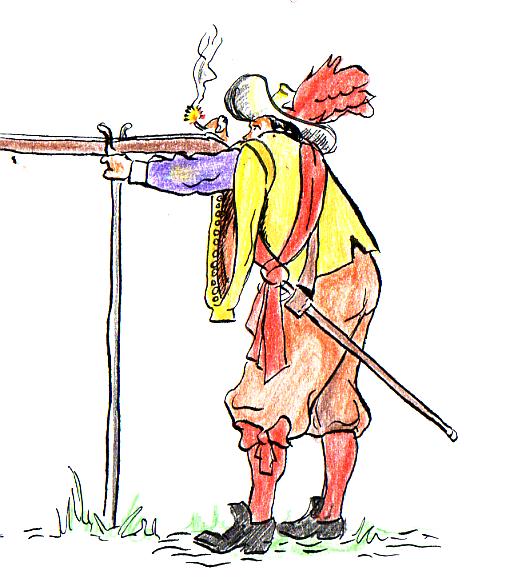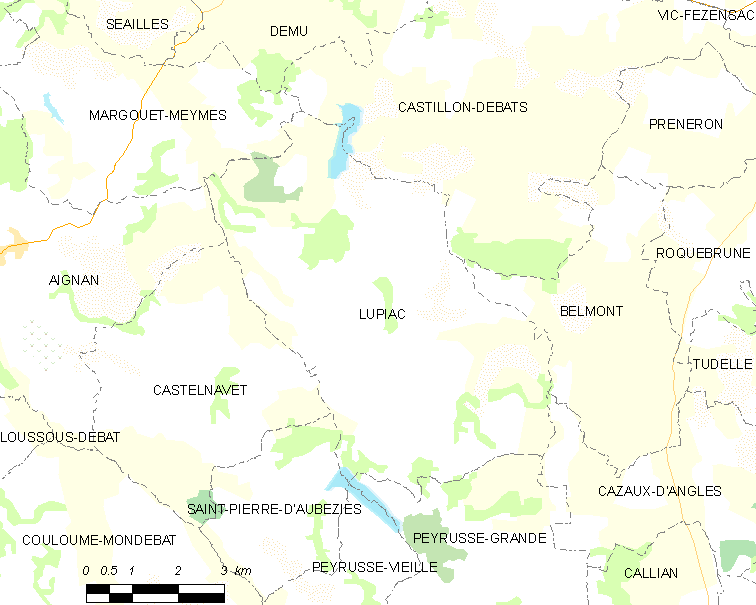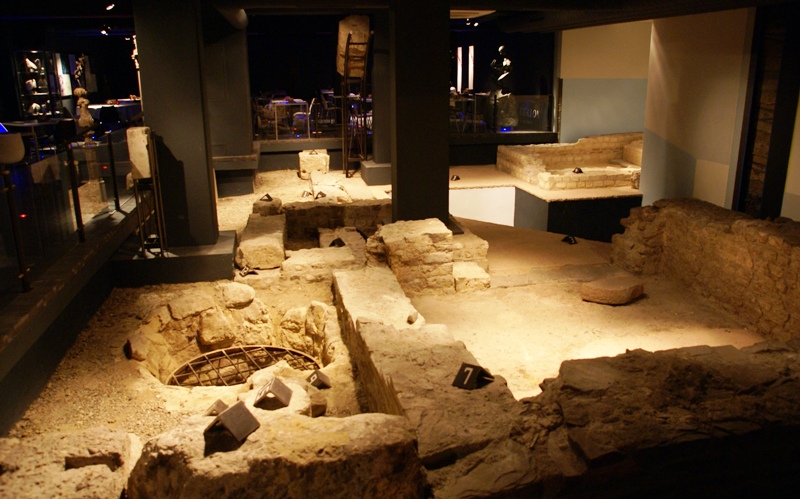|
D'Artagnan
Charles de Batz de Castelmore (), also known as d'Artagnan and later Count d'Artagnan ( 1611 – 25 June 1673), was a French Musketeer who served Louis XIV as captain of the Musketeers of the Guard. He died at the siege of Maastricht in the Franco-Dutch War. A fictionalised account of his life by Gatien de Courtilz de Sandras formed the basis for the d'Artagnan Romances of Alexandre Dumas ''père'', most famously including ''The Three Musketeers'' (1844). The heavily fictionalised version of d'Artagnan featured in Dumas' works and their subsequent screen adaptations is now far more widely known than the real historical figure. Early life D'Artagnan was born at the Château de Castelmore near Lupiac in south-western France. His father, Bertrand de Batz lord of Castelmore, was the son of a newly ennobled merchant, Arnaud de Batz, who purchased the Château de Castelmore. Charles de Batz went to Paris in the 1630s, using the name of his mother Françoise de Montesquiou d'Arta ... [...More Info...] [...Related Items...] OR: [Wikipedia] [Google] [Baidu] |
The Three Musketeers
''The Three Musketeers'' () is a French historical adventure novel written and published in 1844 by French author Alexandre Dumas. It is the first of the author's three d'Artagnan Romances. As with some of his other works, he wrote it in collaboration with ghostwriter Auguste Maquet. It is in the swashbuckler genre, which has heroic, chivalrous swordsmen who fight for justice. Set between 1625 and 1628, it recounts the adventures of a young man named d'Artagnan (a character based on Charles de Batz de Castelmore d'Artagnan, Charles de Batz-Castelmore d'Artagnan) after he leaves home to travel to Paris, hoping to join the Musketeers of the Guard. Although d'Artagnan is not able to join this elite corps immediately, he is befriended by three of the most formidable musketeers of the age – Athos (character), Athos, Porthos and Aramis, "the three musketeers" or "the three inseparables" – and becomes involved in affairs of state and at court. ''The Three Musketeers'' is primar ... [...More Info...] [...Related Items...] OR: [Wikipedia] [Google] [Baidu] |
The Three Musketeers (film)
''The Three Musketeers'', the 1844 novel by author Alexandre Dumas, has been adapted into numerous films, both live-action and animated. Films Live-action *''The Three Musketeers'', a 1903 French production about which very little is known *''The Three Musketeers: Part 1'' and ''Part 2'', 1911 silent film shorts from Edison Studios starring Sydney Booth (a member of the Booth family) as D'Artagnan *''Les trois mousquetaires'', 1913, French silent film serial directed by André Calmettes, which ran in two installments: ''La haine de Richelieu'' and ''Le triomphe de d’Artagnan'' *''The Three Musketeers'', a 1914 American film directed by Charles V. Henkel and starring Earl Talbot * ''The Three Musketeers'' (1916), a Hollywood feature directed by Charles Swickard, supervised by Thomas H. Ince and including in its cast Louise Glaum as Milady de Winter and Dorothy Dalton as Queen Anne *''Les Trois Mousquetaires'', a 1921 French film featuring Aimé Simon-Girard and Claude Mére ... [...More Info...] [...Related Items...] OR: [Wikipedia] [Google] [Baidu] |
Montesquiou Family
The de Montesquiou family is a French noble family stemming from Montesquiou in Gascony whose documented filiation traces back to circa 1190. In the 18th century, the family was recognized as coming in the 11th century from the Counts of Fezensac (extinct in the 12th century). The Montesquiou family split into several branches, of which only the d'Artagnan branch now remains. Origins The first ancestor of proven genealogy is Raimond-Aimeri de Montesquiou, who died in 1090, grand-father of the Raymond III, baron of Montesquiou, who took part in the Third Crusade with king Philippe Auguste and died around 1190. In the proceedings of the cartulary of Auch (copies from the 13th century), Raymond-Aimeri, first baron of Montesquiou is described around 1096 as the younger brother of Guillaume Astanove Count of Fezensac. The barons of Montesquiou were vassals of their cousins, the counts of Armagnac, who rose to become the most powerful feudal family in medieval France and pat ... [...More Info...] [...Related Items...] OR: [Wikipedia] [Google] [Baidu] |
D'Artagnan Romances
''The d'Artagnan Romances'' are a set of three novels by Alexandre Dumas (1802–1870), telling the story of the 17th-century musketeer d'Artagnan. Dumas based the character and attributes of d'Artagnan on captain of musketeers Charles de Batz-Castelmore d'Artagnan (''c.'' 1611–1673) and the portrayal was particularly indebted to d'Artagnan's semi-fictionalized memoirs as written 27 years after the hero's death by Gatien de Courtilz de Sandras (published 1700). Books in the series *''The Three Musketeers'', set between 1625 and 1628; first published in serial form in the magazine ''Le Siècle'' between March and July 1844. Dumas claims in the foreword to have based it on manuscripts he had discovered in the Bibliothèque Nationale. *'' Twenty Years After'', set between 1648 and 1649; serialized from January to August 1845. *'' The Vicomte of Bragelonne: Ten Years Later'', set between 1660 and 1673; serialized from October 1847 to January 1850. This vast novel has been split ... [...More Info...] [...Related Items...] OR: [Wikipedia] [Google] [Baidu] |
Gatien De Courtilz De Sandras
Gatien de Courtilz de Sandras (1644, Montargis – 8 May 1712, Paris) was a French novelist, journalist, pamphleteer and memorialist. His abundant output includes short stories, gallant letters, tales of historical love affairs (''Les Intrigues amoureuses de la Cour de France'', 1684), historical and political works, biographies and semi-fictional "memoirs" (in the first person; his prefaces often indicate that the works were composed of papers found after the subject's death) of historical figures from the recent past (such as the Marquis de Montbrun and M. de Rochefort). His memoir-novels (''Mémoires de M.L.C.D.R.'', 1687; ''Mémoires de M. d'Artagnan'', 1700; ''Mémoires de M. de B.''; 1711) describe the social and political world of Richelieu and Mazarin with a picaresque realism (spies, kidnappings, and political machinations predominate) and they were important precursors to both French picaresque novels and literary realism in the 18th century. Courtilz de Sandras ... [...More Info...] [...Related Items...] OR: [Wikipedia] [Google] [Baidu] |
Musketeer
A musketeer ( ) was a type of soldier equipped with a musket. Musketeers were an important part of early modern warfare, particularly in Europe, as they normally comprised the majority of their infantry. The musketeer was a precursor to the rifleman. Muskets were replaced by breech loading rifles as the almost universal firearm for modern armies during the period 1850 to 1870. The traditional designation of "musketeer" for an infantry private survived in the Imperial German Army until World War I. Historical antecedents The hand cannon was invented in Song dynasty China in the 12th century and was in widespread use there in the 13th century. It spread westward across Asia during the 14th century. The hand cannon evolved into the arquebus that appeared in Europe and the Ottoman Empire during the 15th century. The term musket was originally used to describe a heavy arquebus capable of penetrating heavy armor. Although this heavy version of the musket fell out of use after the mid ... [...More Info...] [...Related Items...] OR: [Wikipedia] [Google] [Baidu] |
Siege Of Maastricht (1673)
The siege of Maastricht took place from 13 to 30 June 1673 during the Franco-Dutch War of 1672 to 1678, when a French army captured the Dutch fortress of Maastricht. The city occupied a key strategic position on the Meuse river and its capture was the main French objective for 1673. It was returned to the Dutch under the terms of the 1678 Treaty of Nijmegen. The siege was conducted by the French military engineer Sébastien Le Prestre de Vauban, Vauban and is thought to be the first use of a technique known as the "#Siege parallel, siege parallel", a concept that remained in use until the mid-20th century. Casualties included Charles de Batz de Castelmore d'Artagnan, reputedly the inspiration for the central character in Alexandre Dumas' historical novel ''The Three Musketeers''. Background In the 1667–1668 War of Devolution, France captured parts of the Spanish Netherlands and the entire Franche-Comté but was forced to relinquish the bulk of these gains in the Treaty of ... [...More Info...] [...Related Items...] OR: [Wikipedia] [Google] [Baidu] |
Lupiac
Lupiac () is a Communes of France, commune in the Gers Departments of France, department in southwestern France. Geography The Auzoue forms most of the commune's southeastern border. The Douze forms the commune's western border. Population Literature Charles de Batz de Castelmore d'Artagnan ( 1611 – 25 June 1673), a captain of the Musketeers of the Guard, was born here. A fictionalized version of his life is central to ''The Three Musketeers'' by Alexandre Dumas, père. Lupiac has a museum dedicated to him. See also * Communes of the Gers department References Communes of Gers {{Gers-geo-stub ... [...More Info...] [...Related Items...] OR: [Wikipedia] [Google] [Baidu] |
Maastricht
Maastricht ( , , ; ; ; ) is a city and a Municipalities of the Netherlands, municipality in the southeastern Netherlands. It is the capital city, capital and largest city of the province of Limburg (Netherlands), Limburg. Maastricht is located on both sides of the Meuse (), at the point where the river is joined by the Jeker. Mount Saint Peter (''Sint-Pietersberg'') is largely situated within the city's municipal borders. Maastricht is adjacent to the border with Belgium and is part of the Meuse-Rhine Euroregion, an international metropolis with a population of about 3.9 million, which includes the nearby German and Belgian cities of Aachen, Liège, and Hasselt. Maastricht developed from a Roman Republic, Roman settlement (''Trajectum ad Mosam'') to a medieval river trade and religious centre. In the 16th century it became a garrison town and in the 19th century an early industrial centre. Today, the city is a thriving cultural and regional hub. It became well known through ... [...More Info...] [...Related Items...] OR: [Wikipedia] [Google] [Baidu] |
Musketeers Of The Guard
The Musketeers of the military household of the King of France ( or ''compagnie des mousquetaires du roi''), also known as the Musketeers of the Guard () or King's Musketeers (), were an elite fighting company of the military branch of the Maison du Roi, the royal household of the French monarchy. History They were founded in 1622 when Louis XIII furnished a company of light cavalry (the ''carabins'', created by Louis' father Henry IV) with muskets. The Musketeers fought in battles both on foot (infantry) and on horseback (cavalry). They formed the royal guard for the king while he was outside of the royal residences (within the royal residences, the king's guard was the '' Garde du corps'' and the '' Gardes suisses''). The Musketeers of the Guard wore an early type of military uniform with a tabard (known as ''soubreveste''), indicating that they "belonged" to the King, and an embroidered white cross denoting the fact that they were formed during the Huguenot rebellions in ... [...More Info...] [...Related Items...] OR: [Wikipedia] [Google] [Baidu] |
Alexandre Dumas
Alexandre Dumas (born Alexandre Dumas Davy de la Pailleterie, 24 July 1802 – 5 December 1870), also known as Alexandre Dumas , was a French novelist and playwright. His works have been translated into many languages and he is one of the most widely read French authors. Many of his historical novels of adventure were originally published as serial (literature), serials, including ''The Count of Monte Cristo'', ''The Three Musketeers'', ''Twenty Years After'' and ''The Vicomte of Bragelonne: Ten Years Later''. Since the early 20th century, his novels have been adapted into nearly 200 films. Prolific in several genres, Dumas began his career by writing plays, which were successfully produced from the first. He wrote numerous magazine essay, articles and travel books; his published works totalled 100,000 pages. In the 1840s, Dumas founded the Théâtre Historique in Paris. His father, General Thomas-Alexandre Dumas, Thomas-Alexandre Dumas Davy de la Pailleterie, was born in the ... [...More Info...] [...Related Items...] OR: [Wikipedia] [Google] [Baidu] |
Gardes Françaises
The French Guards (, ) were an elite infantry regiment of the French Royal Army. They formed a constituent part of the maison militaire du roi de France ("military household of the king of France") under the Ancien Régime. The French Guards, who were located in Paris, played a major part in the French Revolution as most of the guardsmen defected to the revolutionary cause and ensured the collapse of absolute monarchy in France. French Guards led the Storming of the Bastille and formed the cadre for the National Guard. History The regiment was created in 1563 by Charles IX. It was composed of 9,000 men in 30 companies in 1635 with 300 fusiliers per company. They were armed with a form of musket (''"fusils"'') or steel-handled pikes, and were allowed to conduct a normal civilian life in times of peace. In practice this meant that they could undertake civilian employment when not required on duty. At Catherine de' Medici's insistence, they were at first spread over several ... [...More Info...] [...Related Items...] OR: [Wikipedia] [Google] [Baidu] |









